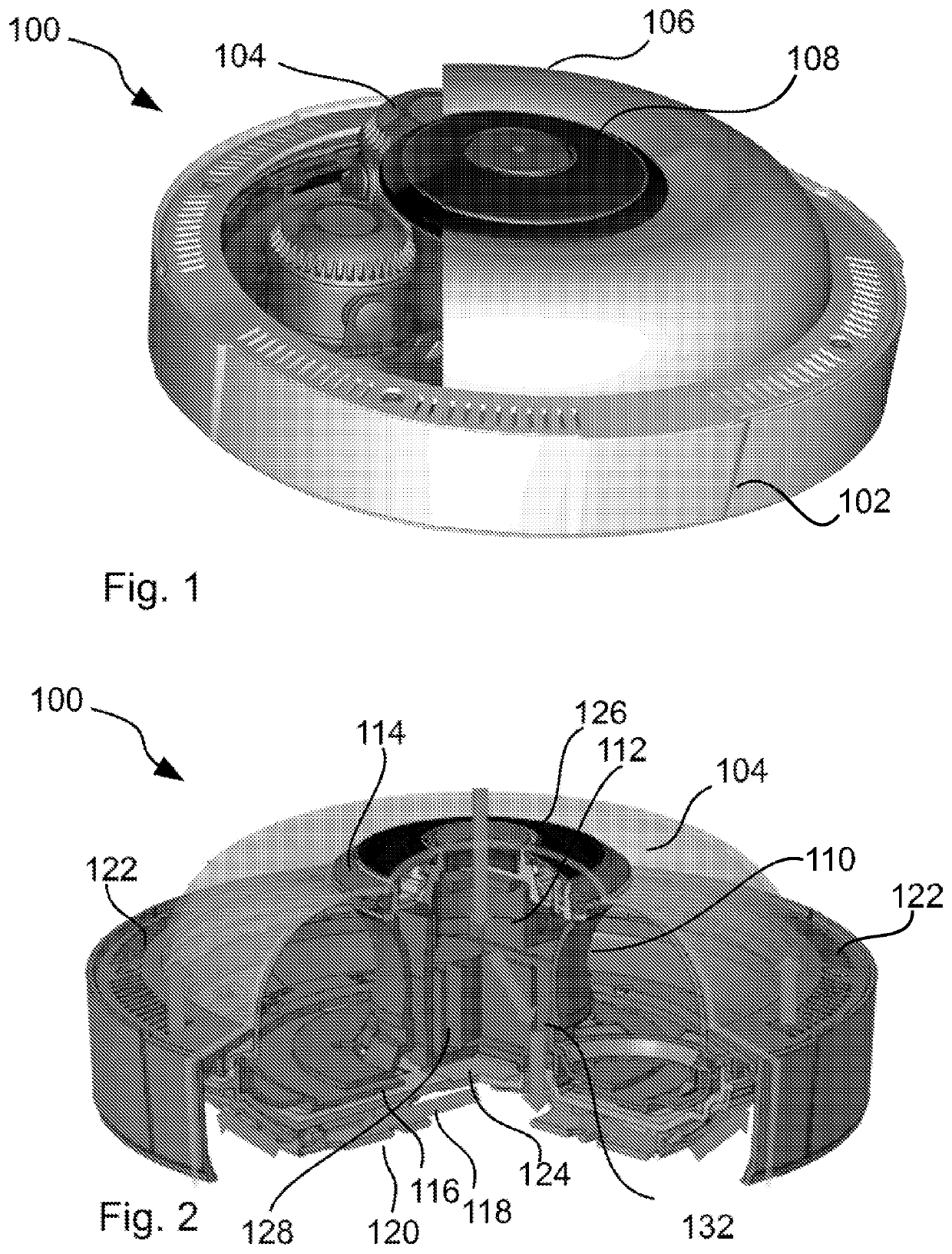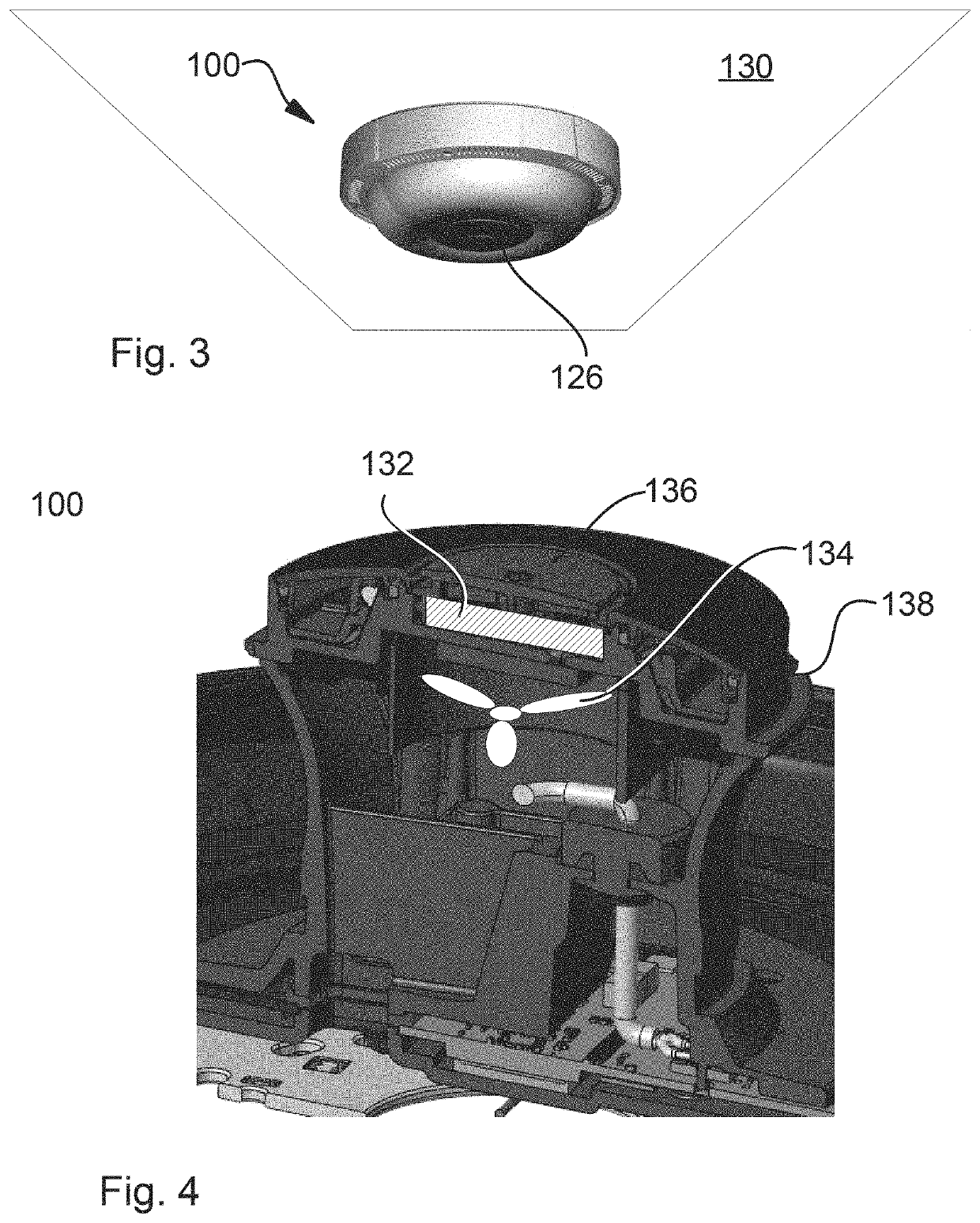Camera assembly having a cooling arrangement
a technology of cooling arrangement and camera assembly, which is applied in the field of camera assembly, can solve the problems of increasing the noise generated by the system, increasing the complexity of installation or design, and a design that could be perceived as too bulky, so as to improve the cooling arrangement, efficient cooling, and efficient transfer
- Summary
- Abstract
- Description
- Claims
- Application Information
AI Technical Summary
Benefits of technology
Problems solved by technology
Method used
Image
Examples
Embodiment Construction
[0023]A camera assembly 100, in which the present teachings may be embodied, is illustrated in the perspective view of FIG. 1. The camera assembly 100 comprises a housing 102, one or more camera heads 104, and a transparent dome 106. A similar version of such a camera assembly is disclosed in EP2887328, by the present applicant.
[0024]Part of the transparent dome 106 has been cutaway so some camera heads 104 are clearly visible. A central part 108 of the assembly may comprise connectors, control units etc. (not shown), for receiving, processing and forwarding the result of the imaging effected by the camera heads 104. The central part 108 will in this embodiment comprise the cooling arrangement, or at least a portion thereof, and we will return to that. First, two things may be noted to increase the understanding of the present illustrated camera assembly 100; each of the individually mentioned portions may in fact comprise several parts, e.g. the “housing 102” may comprise a base, a...
PUM
 Login to View More
Login to View More Abstract
Description
Claims
Application Information
 Login to View More
Login to View More - R&D
- Intellectual Property
- Life Sciences
- Materials
- Tech Scout
- Unparalleled Data Quality
- Higher Quality Content
- 60% Fewer Hallucinations
Browse by: Latest US Patents, China's latest patents, Technical Efficacy Thesaurus, Application Domain, Technology Topic, Popular Technical Reports.
© 2025 PatSnap. All rights reserved.Legal|Privacy policy|Modern Slavery Act Transparency Statement|Sitemap|About US| Contact US: help@patsnap.com


